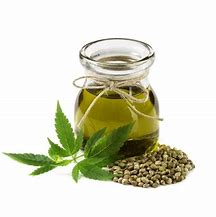Rose Hip Oil






-
Rose Hip Oil
- Latin Names
Rosa Species
(Rosa canina L.., also R.acicularis Lindl..,
R. cinnamomea L.., R. rugosa, R.villosa, R.rubiginosa)
Family: Rosaceae - Etymology
Rosa canina is known as the dog rose or the moquette rose. Canina is from the Latin meaning dog-like, perhaps from the sharp toothed leaves, or, as some think, from the old belief that the root of the plant was a cure for rabies resulting from the bite of a rabid dog. Acicularis means needle like, villosa means soft haired, rubiginosa means rusty, rugosa means wrinkled and cinnamomea means cinnamon brown. - The plant and its environment
This bush grows wi8ld in the Andes, principally in Chile and Peru, and is found in poor soil in mountainous areas, where it reaches a height of up to 2.5 meters (8 feet). It bears white and pink flowers of 3-6 cm diameter which ultimately forms hips (amarilla). The rose hips owe their colour to carotenoids (Bruneton 1955); technically they are the swollen receptacles, Fructus cynosbati (Schauenberg & Paris 1990); cyno comes from the Greek kyon meaning dog. - The OIl
The oil is a golden reddish colour, due to the carotenoids in the hips, and, as it is produced from the fruits or berries of wild bushes, it can be said to be an organic oil. Rose hip seed oil is a pressed seed oil, extracted from the seeds of a wild rose bush (Rosa moschata or Rosa rubiginosa) in the southern Andes. Rosehip seed oil can also be extracted from Rosa canina, which grows in many regions of the world including South Africa and Europe - Methods of Extraction
Seeds make up 70% by weight of the fruit and these are the source of the oil. It is extracted and refined using adaptations of conventional methods. The hips are first dried at temperatures which are kept below 80C in order to avoid possible degradation. They are ten split in order to obtain the seeds which are themselves broken down via grinding process. A rosehip oil is obtained by simple cold expression in Chile. Crude rose hip oil is produced by solvent extraction (hexane) this can then be further refined in order to obtain a material with an extended shelf life. There are two qualities , one unrefined and the other refined and which may have been subject to temperatures up to 250C. - Principal constituents
| Type | Based On | Content - % | |
| Saturated Fatty acid units | |||
| C12:0 | Lauric acid | trace | |
| C14:0 | Myristic acid | trace | |
| C16:0 | Palmitic acid | 3.6 | |
| C18:0 | Stearic acid | 1.7 | |
| C20:0 | Arachidic acid | 0.7 | |
| C22:0 | Behenic acid | trace | |
| Typical saturated fatty acid unit content | 6 | ||
| Monounsaturated fatty acid units: |
| C16:1 | Palmitoleic acid | trace | |
| C18:1 | Oleic acid | 13.4 | |
| C20:1 | eicosenoic acid | trace | |
| Typical monounsaturated fatty acid content | |||
| Polyunsaturated fatty acid units: | |||
| C18:2 | Linoleic acid | 43.6 | |
| C18:3 | Alpha-Linolenic acid | 36.2 | |
| Typical polyunsaturated fatty acid unit content | 78 | ||
|
Physical Properties |
|||
| Odour | Slightly castor oil like |
| Acid Value | 0.16 | ||
| Specific Gravity | 0.927 | ||
- Folk-lore and traditional plant uses
Rose hips contain twenty times as much vitamin C as oranges, and children in the 1930's and 40's were given rose -hip syrup to supplement their intake of Vitamin C. The hips themselves have a tonic effect and their seeds were once used as a diuretic, although one study has shown that an infusion of the hips does not have a diuretic effect (Jaretzky 1941). The hips and leaves are mildly laxative (Tyler 1993) and have an astringent action (Stuart 1987). Phytopharmaceutical drugs based on rose hips have been traditionally used in functional asthenia, and to facilitate weight gain (Bruneton 1995). - Therapeutic properties - internal use
Rose hip oil contains small amounts of trans-retinoic acid which gives it therapeutic properties. The oil is antiscorbutic, anti-haemorrhagic and diuretic. - Therapeutic properties - external use
problems where skin regeneration is concerned
scars
wounds
burns
eczema - Cosmetic use
is commonly used in skin care products. It is commonly used for a variety of skin conditions, including dermatitis, and eczema, for mature and sun burnt skin as well as brittle nails and wrinkles. Rose hip oil is also frequently used to heal scarring and diminish photo-aging. It quickly absorbs into the skin, replenishing moisture and creating a protective barrier on the skin to help prevent dehydration.
In Chile it has been found that the oil is a tissue regenerator, having an effect on the skin to prevent premature ageing, minimize wrinkles and reduce scar tissue. - Nutrition
The oil contains provitamin A (mostly beta-Carotene). It has been wrongly said to contain retinol (vitamin A) which is a vitamin solely made by animals from provitamin A. It does however contain levels (up to .357 ml/L) of tretinoin or all-trans retinoic acid, a vitamin A acid that retinol converts to. Similarly, while the fruit is rich in vitamin C, the oil does not contain any, as it is a water-soluble vitamin.
Rose hip seed oil is high in the essential fatty acids: linoleic acid or omega-6, and linolenic acid or omega-3. - Culinary use
As a fitness tea, rose hips help maintain a healthy collagen (Bartram 1996 ). Rose hips were a popular sweetmeat in the Middle Ages (Chevallier 1996). Jellies, syrups, jams, and herbal teas are today produced from the fruits (Schauenberg & Paris 1990). - Cautionary notes
Trans-retinoic acid presents benefits without harmful secondary effects, except in the case of overdose, when irritation may be caused. - References: Carrier oils/Len Price et al
- J. Concha; C. Soto; R. Chamy; M. E. Zúñiga (2006). "Effect of rosehip extraction process on oil and defatted meal physicochemical properties". Journal of the American Oil Chemists' Society. 83 (9): 771–775. doi:10.1007/s11746-006-5013-2.
"A Present from Chile: Rosehip Seed Oil". Oily Oily. Retrieved 13 August 2013.
"Rose Hip Oil Benefits". JenRuhman. Retrieved 10 September 2014.
Articles-Most Read
- Home
- Contact Us
- Coconut Oil-2
- Absorption Ratings for Carrier Oils
- Cold Pressing Method
- What are Essential Fatty Acids
- Cherry Kernel Oil
- Fixed Oils and Skin Penetration
- Hempseed Oil
- Almond Oil
- Cocoa butter
- Camelina Oil
- Coconut Oil
- Antibacterial Effects Of Carrier Oil
- Lime Blossom Oil (macerated)
- Carrot Oil, Wild Carrot Oil (macerated)
- Apricot Kernel Oil
- Kukui Nut Oil
- Jojoba Wax
- Pumkin Seed Oil - Cucurbita maxima, C. pepo
- Passion Flower OIl (Macerated)
- Hydrocotyle Oil (macerated)
- Palm Kernel Oil
- Rapeseed Oil - Carrier Oil
- Nutrients
Who's On Line
We have 133 guests and no members online
Articles-Latest
- How to Make Homemade Olive Oil: A Step-by-Step Guide
- 20 Evidence-Based Aloe Vera Oil Benefits For Skin, Hair & Health
- Peanut oil - Cold pressed - Are There Health Benefits? How To Make
- What Are the Health Benefits of Black Seed Oil?
- Comfrey oil Infused
- Chamomile Flowers Infused Oil
- Calendula Flowers Infused Oil
- Arnica Flowers Infused Oil
- How To Make Herb-Infused Oils
- DIY avocado oil for healthy skin
- How To Make Coconut Oil
- 8 Benefits of Mustard Oil, Plus How to Use It
- SHOREA STENOPTERA SEED BUTTER
- Shea Butter- 7 Amazing Benefits Of Shea Butter
- Monoi Oil For Hair & Skin
- Mango Seed Oil
- Cohune Oil Is The Next Big Thing
- Brazil Nut OIl
- 7 Impressive Benefits Of Allspice
- Camelina Oil Benefits, Uses, and Side Effects




